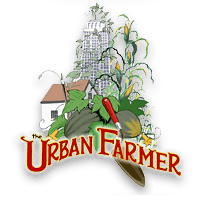Connecting People & Place
Our consulting services are available to organizations, community groups, businesses, families and individuals. Grounded in the ethics and principles of permaculture design, our consultations aim to foster deep interconnections between people and place and to support the creation of resilient local food systems and landscapes that are biodiverse, productive and beautiful. This may range in scale from individual urban lots to small farms, to urban public spaces or subdivisions and to community or municipal projects and initiatives.
A whole-systems approach.
A permaculture approach differs from traditional landscape design in that it is a systems method that endeavours to maximize functional interrelationships between all of the living and non-living elements of the design, including the human inhabitants. (See: An Introduction to Permaculture Design). Like traditional landscape designs, permaculture designs attend to aesthetics and beauty but they are also intended to achieve other yields such as food production, medicinal plants, water harvesting, enhanced biodiversity, income generation and economy, energy, vibrant community life, and any other yields desired by the people living there.
Permaculture designs involve the careful integration of the following essential elements:
- Energy (sun energy that is captured and recycled through the system)
- Water (captured from rain fall and recycled through the system)
- Soil (brought to life by re-establishing the organic matter cycles and the wonderful diversity of organisms)
- Plants (perennials and annuals, natives and some exotics, used for food and many other purposes)
- Animals (from soil organisms, to pollinators, small livestock, and wild species)
- Appropriate technologies (green buildings, energy systems, greenhouses, etc.)
- People (those who live on the land, neighbours and surrounding community)
The essence of permaculture is the thoughtful and appropriate placement of these elements such that they are in positive synergistic relationships with each other and that they function as natural ecosystems do: closed loop cycles, complex and diverse interrelationships, each element playing a multiplicity of roles in the system, and the creation of balance.
Permaculture designs can be practiced on any scale; from a small yard or balcony, to a suburban acreage, small or large farm, a community or a city. No two permaculture designs are alike as the context and the desired yields for each system will differ as will the aesthetic preferences of those who live on the land.
We are able to work with you on a permaculture design for your urban yard, acreage or small farm or community space. The design process begins with a conversation and a questionnaire followed by a site visit to undertake careful observations, assessments and measurements and to have additional conversation with those who are living at or interacting with the site. The end result is a scale drawing that you can take into the installation phase of the project.
Some clients need only a brief consultation to set them on their way developing the project they envision. Others prefer to have our on-going service and support as an integral part of their project.
We can support the installation of your permaculture landscape in the following ways:
- Walking your property with you to help you understand what is there now and what is possible for the future.
- Helping you to create a viable vision for your project.
- Developing a complete design for your property.
- Working as the contractor to undertake the complete project installation
- Acting as a consultant to a contractor or other team of installers who may not have the expertise required to carry out the work
- Working with you to create and coordinate a workshop and work-bee event which would include both a learning opportunity for community members and a supervised volunteer workforce to complete a portion of your project
- The installation of edible forest gardens (see the forest garden section)
“When we set out to build the ultimate eco-house, there was never any doubt that we wanted Ron Berezan to design and construct the landscape for it. We felt that no one else in the region had his breadth and depth of knowledge about edible, sustainable landscapes. What we didn’t count on was his eye for designing beautiful spaces (making use of many reclaimed materials to boot!). Overall, we are delighted with the yard that Ron and his crew built for us.”







